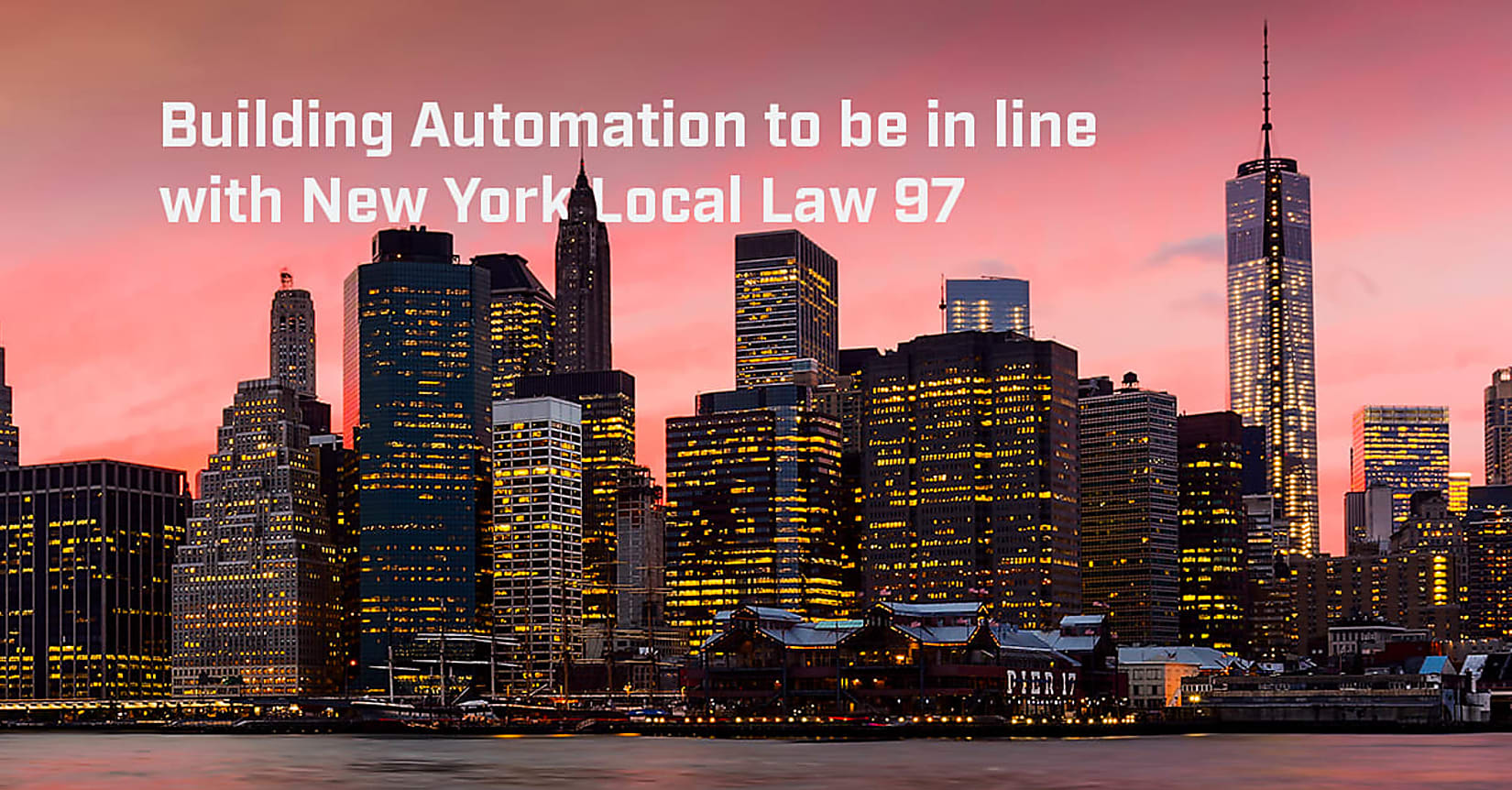The New York City Local Law 97 sets specific emission limits per square foot of building area. Building Automation enables centralized control, real-time monitoring, and data analytics to help building owners to be in line with the LL97 requirements.

The New York City Local Law 97 aims at reducing greenhouse gas emissions by 80% by the year 2050 and fostering sustainability for buildings in the city over a certain size. LL97 sets specific emission limits per square foot of building area, varying by building type and occupancy.
Following one of the most ambitious climate trends in the United States, LL97 requires nearly 50.000 New York buildings to take proactive measures to reduce their carbon footprint.
Here are the Local Law 97 covered buildings but there are some exceptions:
LL97 applies to buildings larger than 25,000 square feet, with some exceptions covering residential, commercial, and institutional buildings. Read more about the required emissions limits and buildings that are exempt from Local Law 97 at the Department of Buildings (DOB) Greenhouse Gas Emission Reporting.
Building automation optimizes energy usage and reduces waste by integrating systems such as HVAC, lighting, and energy management. Gateway integration solutions enable centralized control, real-time monitoring, and data analytics to help building owners make data-based decisions directly related to energy consumption.
LL97 brings several tangible benefits to the environment, the building owners and also the building users and aims to a more sustainable city.
To summarize, The New York City Local Law 97 requirements aim for energy efficiency and represent a bold and necessary win-win step towards reducing greenhouse gas emissions in the city's buildings while both building owners and users get benefits such as cost savings and improved indoor comfort.
Read further information about USA Regulations for energy efficiency and key policy initiatives for building owners in this Whitepaper.